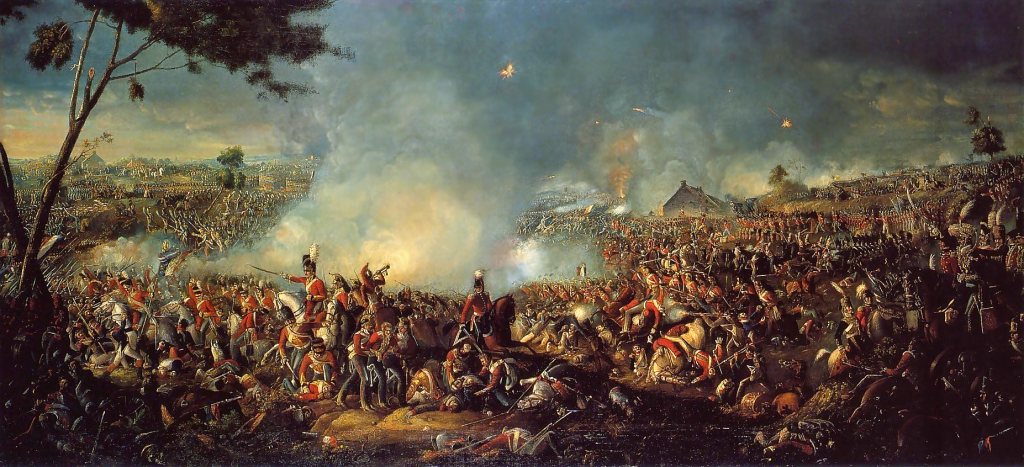Experiment With Your People Systems
 It’s pretty clear that innovation is the way to go. There’s endless creation of new technologies, new materials, and new processes so innovation can create new things to sell. And there are multiple toolsets and philosophies to get it done, but it’s difficult.
It’s pretty clear that innovation is the way to go. There’s endless creation of new technologies, new materials, and new processes so innovation can create new things to sell. And there are multiple toolsets and philosophies to get it done, but it’s difficult.
When doing new there’s no experience, no predictions, no certainty. But innovation is no dummy and has come up with a way to overcome the uncertainty. It builds knowledge of systems through testing – build it, test it, measure it, fix it. Not easy, but doable. And what makes it all possible is the repeatable response of things like steel, motors, pumps, software, hard drives. Push on them repeatably and their response is repeatable; stress them in a predictable way and their response is predictable; break them in a controlled way and the failure mode can be exercised.
Once there’s a coherent hypothesis that has the potential to make magic, innovation builds it in the lab, creates a measurement system to evaluate goodness, and tests it. After the good idea, innovation is about converting the idea into a hypothesis – a prediction of what will happen and why – and testing them early and often. And once they work every-day-all-day and make into production, the factory measures them relentlessly to make sure the goodness is shipped with every unit, and the data is religiously plotted with control charts.
The next evolution of innovation will come from systematically improving people systems. There are some roadblocks but they can be overcome. In reality, they already have been overcome it’s just that no one realizes it.
People systems are more difficult because their responses are not repeatable – where steel bends repeatably for a given stress, people do not. Give a last minute deliverable to someone in a good mood, and the work gets done; give that same deliverable to the same person on a bad day, and you get a lot of yelling. And because bad moods beget bad moods, people modify each other’s behavior. And when that non-repeatable, one-person-modifying-another response scales up to the team level, business unit, company, and supply chain, you have a complex adaptive system – a system that cannot be predicted. But just as innovation of airliners and automobiles uses testing to build knowledge out of uncertainty, testing can do the same for people systems.
To start, assumptions about how people systems would respond to new input must be hardened into formal hypotheses. And for the killer hypotheses that hang together, an experiment is defined; a small target population is identified; a measurement system created; a baseline measurement is taken; and the experiment is run. Data is then collected, statistical analyses are made, and it’s clear if the hypothesis is validated or not. If validated, the solution is rolled out and the people system is improved. And in a control chart sense, the measurement system is transferred to the whole system and is left to run continuously to make sure the goodness doesn’t go away. If it’s invalidated, another hypothesis is generated and the process is repeated. (It’s actually better to test multiple hypotheses in parallel.)
In the past, this approach was impossible because the measurement system did not exist. What was needed was a simple, mobile data acquisition system for “people data”, a method to automatically index the data, and a method to quickly process and display the results. The experimental methods were clear, but there was no response for the experiments. Now there is.
People systems are governed by what people think and feel, and the stories they tell are the surrogates for their thoughts and feelings. When an experiment is conducted on a people system, the stories are the “people data” that is collected, quantified, and analyzed. The stories are the response to the experiment.
It is now possible to run an experiment where a sample population uses a smart phone and an app to collect stories (text, voice, pictures), index them, and automatically send them to a server where some software groups the stories and displays them in a way to see patterns (groups of commonly indexed stories). All this is done in real time. And, by clicking on a data point, the program brings up the story associated with that data point.
Here’s how it works. The app is loaded, people tell their stories on their phone, and a baseline is established (a baseline story pattern). Inputs or constraints are changed for the target population and new stories are collected. If the patterns change in a desirable way (statistical analysis is possible), the new inputs and constraints are rolled out. If the stories change in an undesirable way, the target population reverts back to standard conditions and the next hypothesis is tested.
Unbiased, real time, continuous information streams to make sense of your people systems is now possible. Real time, direct connection to your employees and your customers is a reality, and the implications are staggering.
Thank you Dave Snowden.
 Mike Shipulski
Mike Shipulski